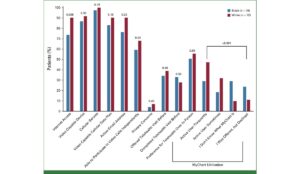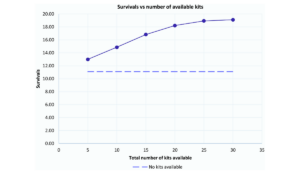Prison Chaplain Views on Criminality and Reform
Prison chaplains answered a series of questions focused on causes of crime, reducing recidivism, and the role that personal religion can play in recidivism. Four prominent themes emerged.

Read Time: 4 minutes
Published:
Religion is an important force in the history of American prisons. Through the early efforts of the Quakers in colonial America and the formative years of the United States, religion was ingrained into the DNA of corrections. Penitentiaries derive their name from the act of penitence and inmates were sentenced to repent their sinful (i.e., criminal) ways. Prison chaplains were entrusted with overseeing this moral reform.
Starting in the 1850s, crime was increasingly seen through a scientific lens. Explanations based in biology, psychology and sociology gradually replaced demonic influences as the primary explanation for criminal behavior. The role of prison chaplains slowly changed as many of their original job duties fell to licensed counselors and social workers.
The role of prison chaplains slowly changed as many of their original job duties fell to licensed counselors and social workers.
Passage of the Religious Land Use and Institutionalized Persons Act (RLUIPA) in 2000 ushered in a new era for prison chaplains with a shift to primarily administrative duties. RLUIPA ensures the religious rights of the 2.2 million inmates currently incarcerated in 1,100 state and federal US prisons. Consequently, the estimated 1,600 chaplains are responsible for connecting inmates with religious groups inside and outside of prison. A key duty of modern prison chaplains is overseeing faith-based volunteers from a variety of religions to lead inmate worship. (Chaplains rarely lead worship services.) As such, the primary role of modern prison chaplains is to protect their institutions from costly lawsuits brought as RLUIPA violations.
Approximately 630,000 inmates are released from prison every year and 67.8% return to prison within three years. In the face of such high recidivism, I decided to explore the role chaplains currently play and explore the possibilities for better targeting their skills to meet prisoners’ psychological and emotional needs.
I conducted in-depth interviews with 19 prison chaplains employed by a department of corrections in a Midwestern US state to understand their perceptions about criminal behavior and recidivism. Chaplains answered a series of questions focused on 1) causes of crime, 2) successful practices for reducing recidivism, and 3) the role that personal religion or faith can play in recidivism.
Four prominent themes emerged. Chaplains overwhelmingly viewed illegal drug-use, poor social support, low self-control, and having a ‘criminal mind’ as primary reasons for criminal behavior. Nearly half perceived offenders as having a ‘criminal mind’ that psychologically sets them apart. Some chaplains reported that changing ‘criminal thinking’ is imperative, echoing some basic tenants of cognitive behavioral therapy (CBT). That is, changing criminals’ general thinking patterns to make non-criminal choices.
The chaplains who participated in this study noted that people leaving prison face many barriers to successful reentry, such as unemployment and poor social support.
Most chaplains saw religion and faith as essential to building a moral code and avoiding criminal choices. Religion and spirituality, they explained, offer offenders a sense of community support. Conversely, nearly 25% of the chaplains did not view religion or faith as necessary for desistance.
The chaplains who participated in this study noted that people leaving prison face many barriers to successful reentry, such as unemployment and poor social support. Many chaplains explained that these and other challenges such as substance use disorders and problematic reasoning must be addressed. Some chaplains reported that they had the ability to create new programs to meet these needs.
Findings suggest that many prison chaplains still have influence over institutional programming. As such, prison administrators should encourage prison chaplains to assume a more hands-on role with substance abuse treatment programming and CBT and simultaneously reduce their administrative responsibilities. Ultimately, a shift back to their original hands-on role may help to ease the transition from prison to society and reduce recidivism.



